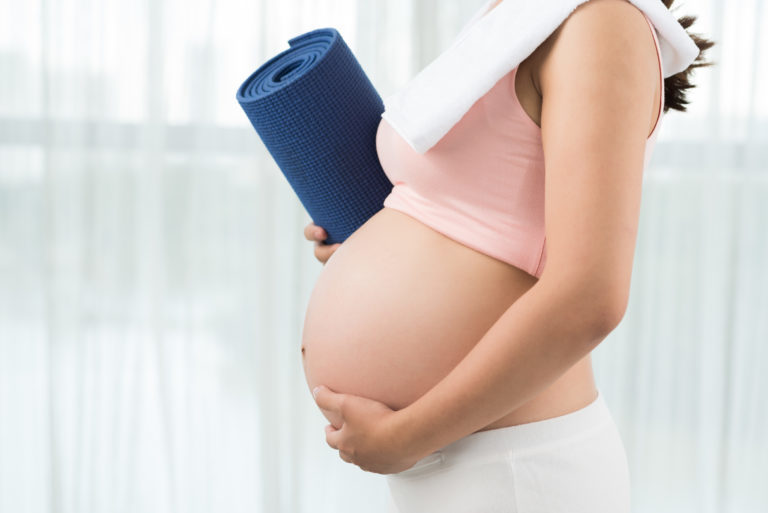
Exercise is integral to a healthy lifestyle. Fortunately, you can continue to exercise during your pregnancy. Here are a few things to consider.
There are many reasons to continue exercising during your pregnancy. Here are a few:
- Lower your risk of gestational diabetes by maintaining a healthy weight
- Stay strong and prepare for the physical demands of motherhood, for example carrying a baby!
- Help your body to adapt to ongoing natural changes (see below)
- Help to reduce swelling
- Help to reduce the risk of postpartum depression
Now that we’ve established some benefits of exercise during pregnancy, let’s talk about some of the natural changes to the body during pregnancy, and how to adapt your exercise regime.
Weight gain and forward center of gravity: Weight gain is typically 10-15kg, and the center of mass moves forward. This can affect posture, as well as balance. It may help to exercise in front of a mirror to monitor postural compensation, and you may choose to modify plyometric style exercises to account for altered balance.
Relaxin hormone: responsible for increased flexibility of ligaments which allow the body to adapt to the growing baby. Due to increased flexibility of the ligaments, you may choose to avoid activities that depend upon support from the ligaments, such as training involving rapid direction change.
Change in fluid balance: near the end of the pregnancy this may make exercise uncomfortable, therefore you may choose unweighted exercise such as using a stationary bike, or exercising in the pool.
Diastasis recti: as the uterus expands to accommodate the growing baby, your abdominal’s will naturally begin to separate. Although this change is natural, it is wise to choose exercises that place less demand on the core muscles, so as not to overload the muscles of the back.
Cardiovascular changes: during pregnancy resting heart rate increases, and blood pressure decreases. Take this into consideration if you use resting heart rate as a way to monitor your exertion level. Instead, consider using perceived exertion as a guideline, and aim to be able to carry on a conversation. As far as blood pressure changes, make sure to go from lying to sitting to standing slow enough to let your blood pressure adjust to the position change.
So, what forms of exercise work well during pregnancy? Luckily, there are lots of options.
Prenatal classes such as prenatal yoga are geared towards your changing body, and you get the social benefit as well!
Exercise in water is excellent for un-weighting the joints and providing a sense of buoyancy
Stationary biking is another good low impact option
There are many exercises you can safely do at home using your body weight, theraband, or light dumbells.
And we can’t forget about walking! Try to keep up a daily routine, especially near the end of your pregnancy when other forms of exercise may not be as comfortable
Of course, aches and pains associated with some of these natural body changes may prevent you from exercising. If that is the case, we recommend an assessment with a physiotherapist or chiropractor at OMNI – we are here to help!.
And always check with the physician or midwife following you during your pregnancy before you begin any ‘new to you’ forms of exercise.
Reference: http://www.siansmale.com/pilates-blog/2015/4/12/the-benefits-of-exercise-during-pregnancy




